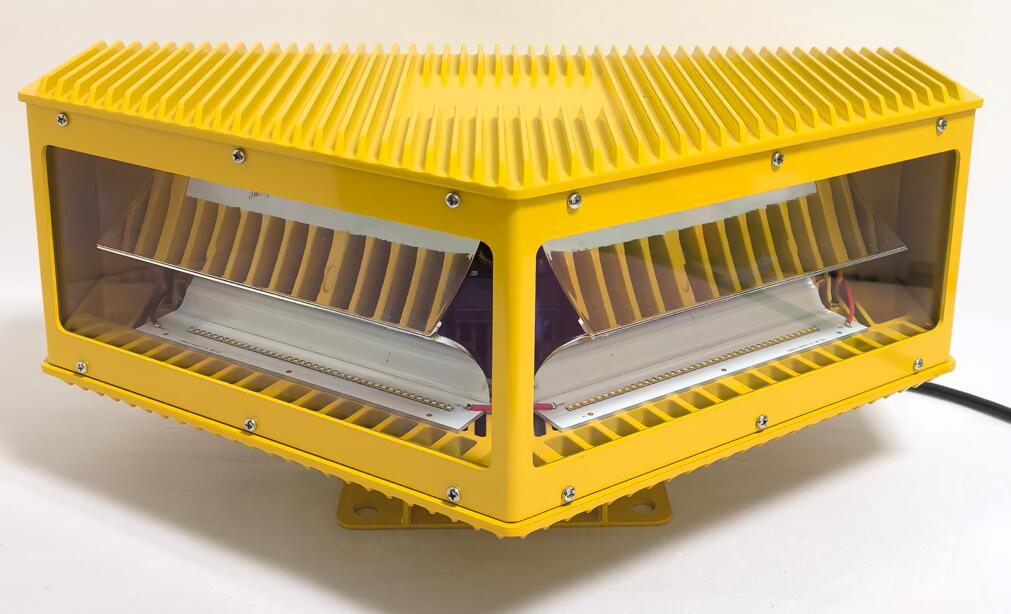As urban landscapes continue to evolve with towering skyscrapers, the need for aviation safety has become paramount. Aircraft warning lights in buildings play a crucial role in preventing collisions between aircraft and high-rise structures, ensuring the safety of both air traffic and urban populations. This article explores the significance, types, regulations, and technological advancements of these essential safety systems.
Why Are Aircraft Warning Lights Necessary?
With the increasing height of modern buildings, especially in densely populated cities, the risk of aircraft collisions has grown significantly. Aircraft warning lights in buildings serve as visual markers, alerting pilots to the presence of obstructions, particularly during low visibility conditions such as fog, heavy rain, or nighttime.

The International Civil Aviation Organization (ICAO) and national aviation authorities mandate the installation of these lights on structures exceeding certain heights. Without them, tall buildings, telecommunication towers, and wind turbines could pose serious hazards to low-flying aircraft, including helicopters and small planes.
Types of Aircraft Warning Lights
There are several types of aircraft warning lights in buildings, each designed for specific purposes and visibility requirements:
1. Red Obstruction Lights
Typically used at night.
Emit steady or flashing red light.
Commonly installed on structures below 200 meters.
2. White Strobe Lights
Used during both day and night for taller structures.
High-intensity flashing lights that are easily visible from long distances.
Often employed on buildings exceeding 200 meters.
3. Dual Lighting Systems
Combine red lights for nighttime and white strobes for daytime.
Ensures continuous visibility under all conditions.
4. Medium-Intensity Lights
Used for structures between 45 and 150 meters.
Can be either red or white, depending on regulations.
Regulations and Compliance
Different countries have specific guidelines governing the installation and operation of aircraft warning lights in buildings. Some key regulatory bodies include:
ICAO (International Civil Aviation Organization) – Provides global standards.
FAA (Federal Aviation Administration, USA) – Regulates lighting for structures in the U.S.
EASA (European Union Aviation Safety Agency) – Oversees European aviation safety.
CAA (Civil Aviation Authority, UK) – Ensures compliance in the UK.
These regulations define the required light intensity, flash patterns, and placement to maximize visibility while minimizing light pollution for surrounding areas.
Technological Advancements in Warning Lights
Recent innovations have improved the efficiency and reliability of aircraft warning lights in buildings:
1. LED Technology
More energy-efficient than traditional incandescent bulbs.
Longer lifespan, reducing maintenance costs.
Brighter and more consistent illumination.
2. Smart Monitoring Systems
Remote diagnostics to detect failures.
Automated alerts for maintenance teams.
Integration with building management systems.
3. Solar-Powered Lights
Environmentally friendly solution.
Ideal for remote or off-grid structures.
Reduces dependency on electrical grids.
Challenges and Considerations
While aircraft warning lights in buildings are essential, they come with challenges:
Light Pollution: Bright strobes can affect nearby residents. Proper shielding and intensity control help mitigate this issue.
Maintenance: Regular inspections are necessary to ensure functionality.
Weather Resistance: Lights must withstand extreme conditions, including storms and high winds.
Aircraft warning lights in buildings are a non-negotiable safety feature in modern urban development. As cities continue to grow vertically, these lights will remain a critical component in aviation safety, preventing accidents and saving lives. With advancements in LED technology and smart monitoring systems, the future of these warning systems looks brighter than ever.

